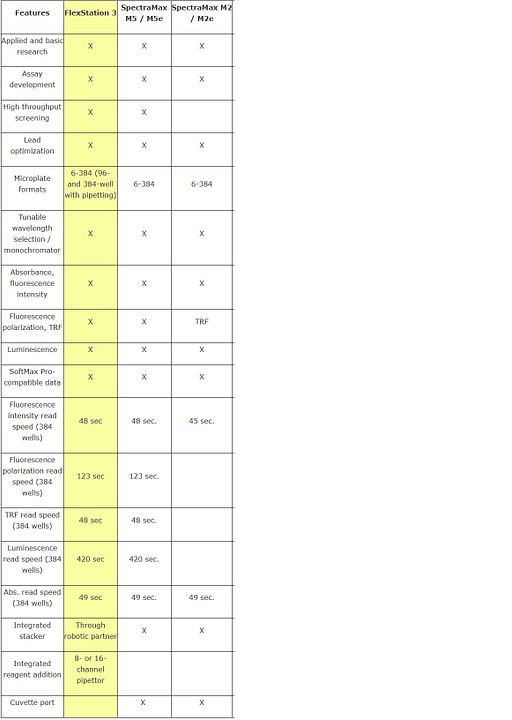-800x600w.jpg)
 | Approved Vendor to many US, Canada, and EU Universities |
 | International Shipping |
 | Customer References Available |
 | Training and Installation Options Available |
- Stock: In Stock
- Brand: Molecular Devices
- Product Code: 48444
- Condition: Pre-Owned
Here is a Molecular Devices FlexStation 3 Multi-Mode Microplate Reader
New costs around $125,000 from VWR
Predecessor to:
Current model
Condition:
This Molecular Devices FlexStation 3 Multi-Mode Microplate Reader is in good working order.
Please see the exact video and photos below.
Testing we performed:
The Molecular Devices FlexStation 3 Multi-Mode Microplate Reader passed all tests and was found to be fully functional:
Tested Power and initialization: PASSED
Tested communication with software: PASSED
Tested Fluorescence top protocol: PASSED
Tested Fluorescence bottom protocol: PASSED
Tested Absorbance protocol: PASSED
Tested Luminescence using chemical luminescent sample: PASSED
Tested incubator function: PASSED
Tested pipette motor function: PASSED
Tested tray motor function: PASSED
Tested tray shaking function: PASSED
We inspected the control and operation of the fluidics system and found to be operating correctly.
The optics system was performance tested using our test plates. (test plates are not included, used for internal testing)
The testing performed on the Molecular Devices FlexStation 3 Multi-Mode Microplate Reader confirms everything is great.
You can buy with confidence knowing it is good to go.
System consists of:
Molecular Devices FlexStation 3 Multi-Mode Microplate Reader
Black plate adapter
Computer running 14-day trial of SoftMax Pro ver7.1. You will need either to get subscription service from Molecular Devices. Around $2500 per year for commercial and around $1000 or possibly less for academic subscription.
Communication and power cables.
Configuration and Setup:
Detection Modes: Fluorescence, Absorbance, Luminescence, Time-Resolved Fluorescence, Fluorescence Polarization
Detection Range: excitation 250nm to 850nm, emission 360nm to 850nm
Plate Formats: 6, 12, 24, 48, 96, 384 wells dependent upon equipped pipettor head
Operating Temperature Range: 15-60C; Incubator Controlled Temperature: 2> ambient to 45C
Shaking Option: Yes; Trituration Option: Yes
Video Description:
The video gives an overview of the Molecular Devices FlexStation 3 Multi-Mode Microplate Reader, and also performs functionality.
Documentation:
Datasheet: N/A
Brochure: Molecular Devices FlexStation 3 Multi-Mode Microplate Reader
Manual: Molecular Devices FlexStation 3 Multi-Mode Microplate Reader
This will ship via freight. Please contact us with your zip code to obtain shipping quote.
*SM* Small Crate
200#
Please do not hesitate to contact us if you have any questions.


We understand that every instrument has unique packing and shipping requirements; our team understands that no one wants to spend thousands of dollars and receive a damaged instrument.
Our process involves evaluating every instrument to determine the safest shipping method and the best process for packing.
We generally ship parcels either via UPS or freight for all larger goods.
Whenever we ship freight, we use an ISPM-15 wooden crates or pallets made from ½” plywood and 1x4 framing. (Our crates are Internationally Compliant).
On freight shipments, we use 2” 1.7 lb. density foam, which provides excellent cushioning and support for the instrument.
Instruments are safely braced inside the crates. We use solid boards with 1” foam shrink-wrapped around them, which provides cushioning in all directions and holds instruments firmly in place.
Final step is to photograph everything inside the crate and then seal it with screws.
.png)

.JPG)
.JPG)
.JPG)
.JPG)
.JPG)
.JPG)
.JPG)
.JPG)
.JPG)
.JPG)
.JPG)
.JPG)
.JPG)
.JPG)
.JPG)
.JPG)